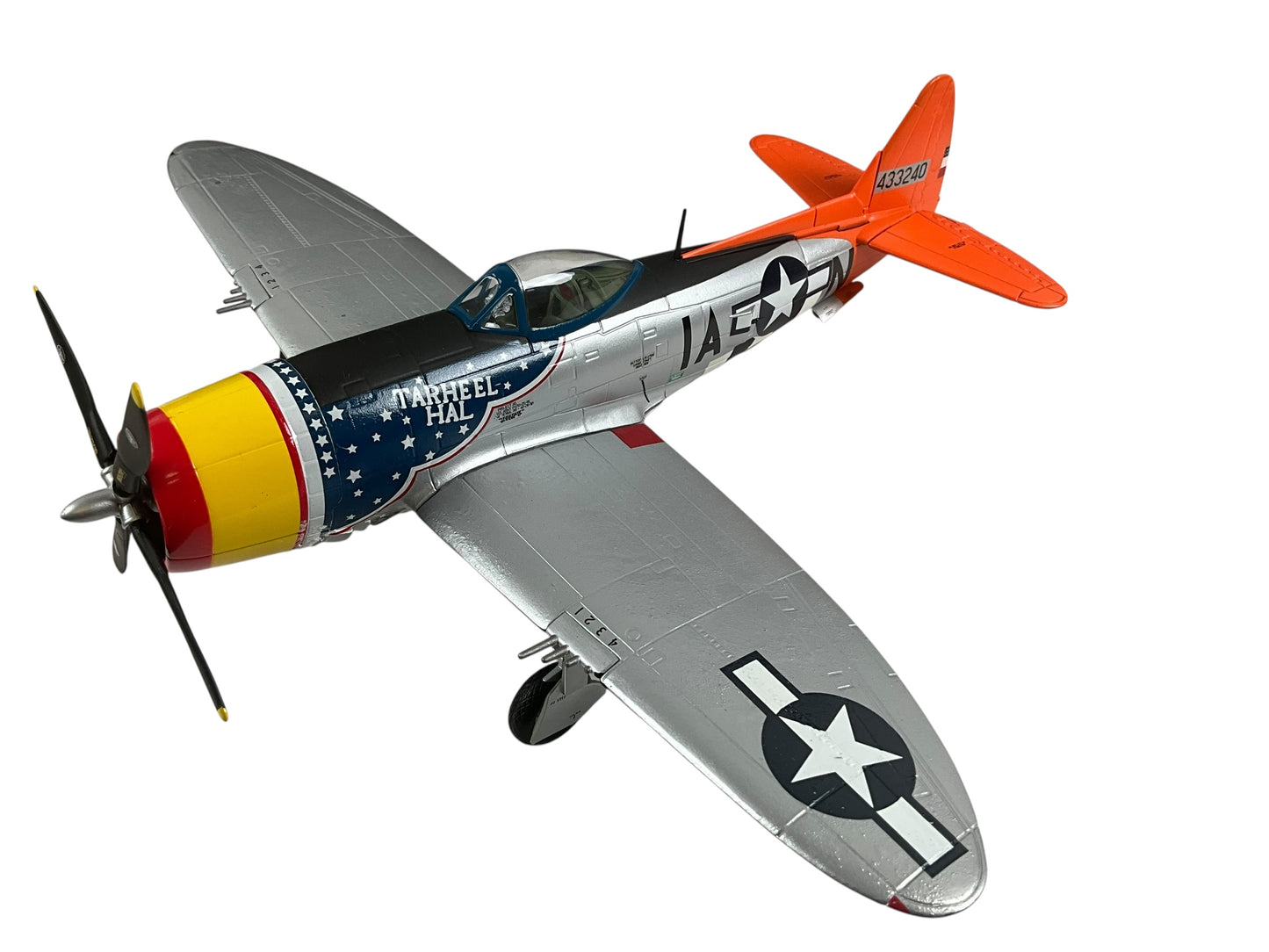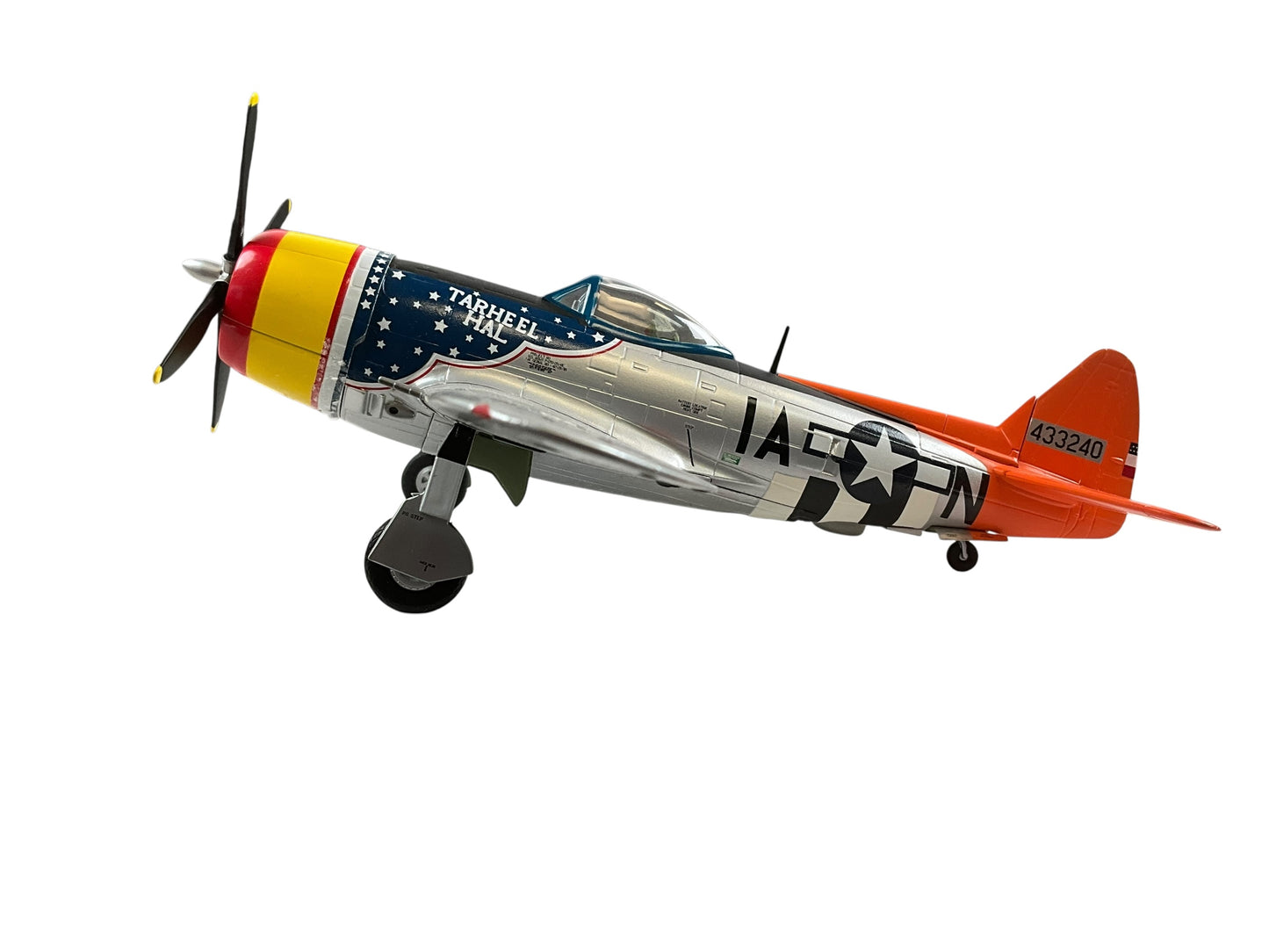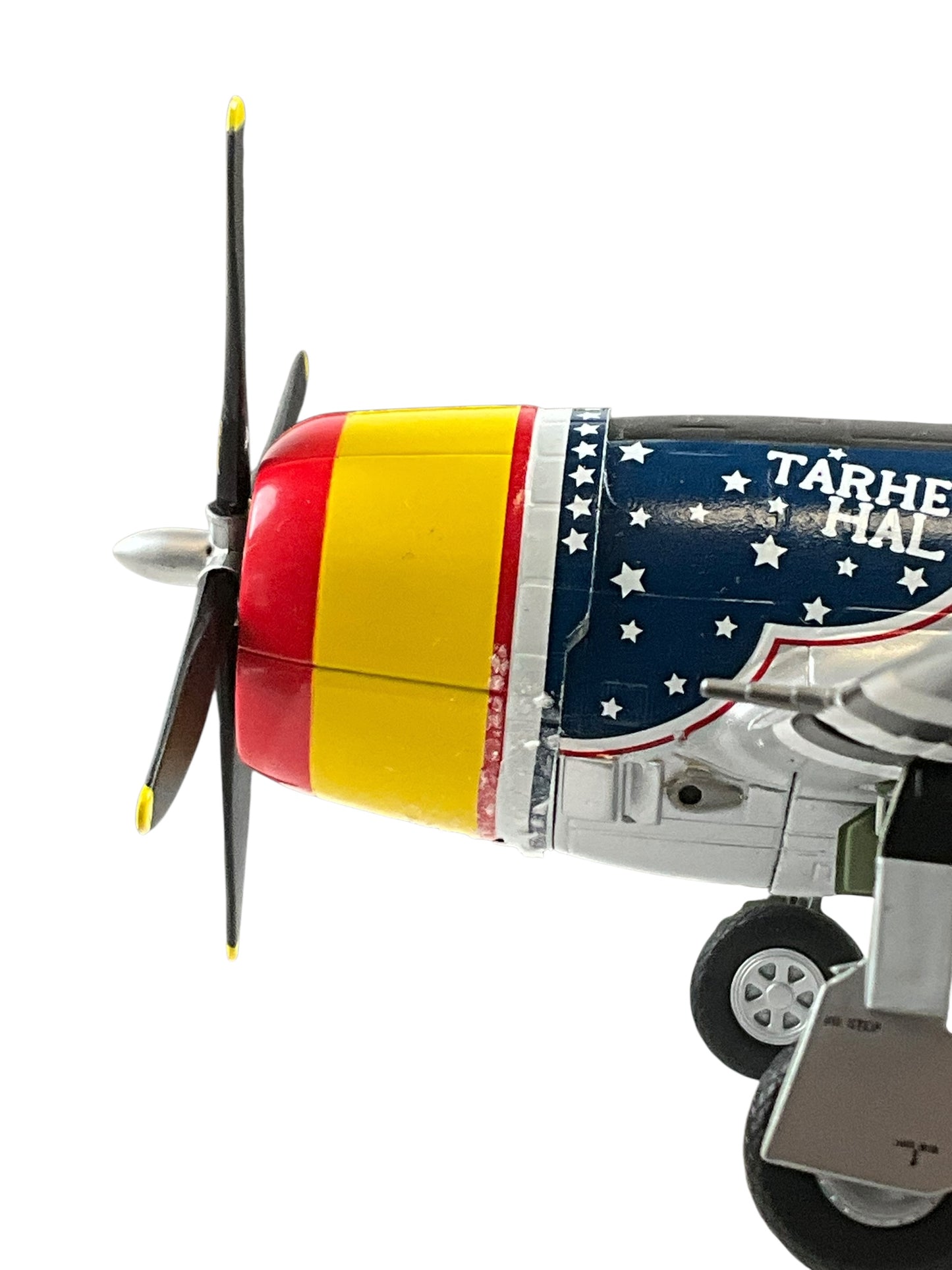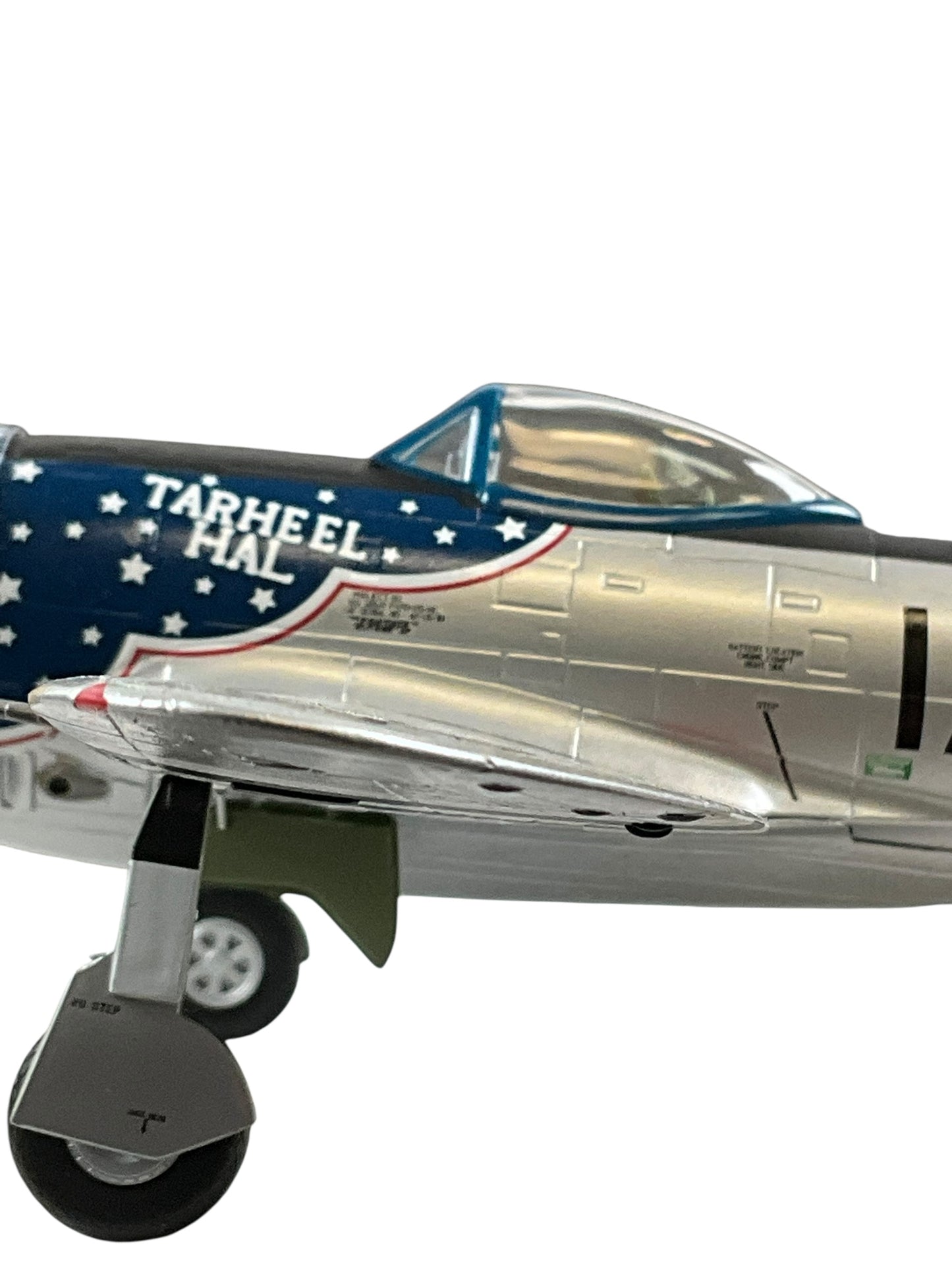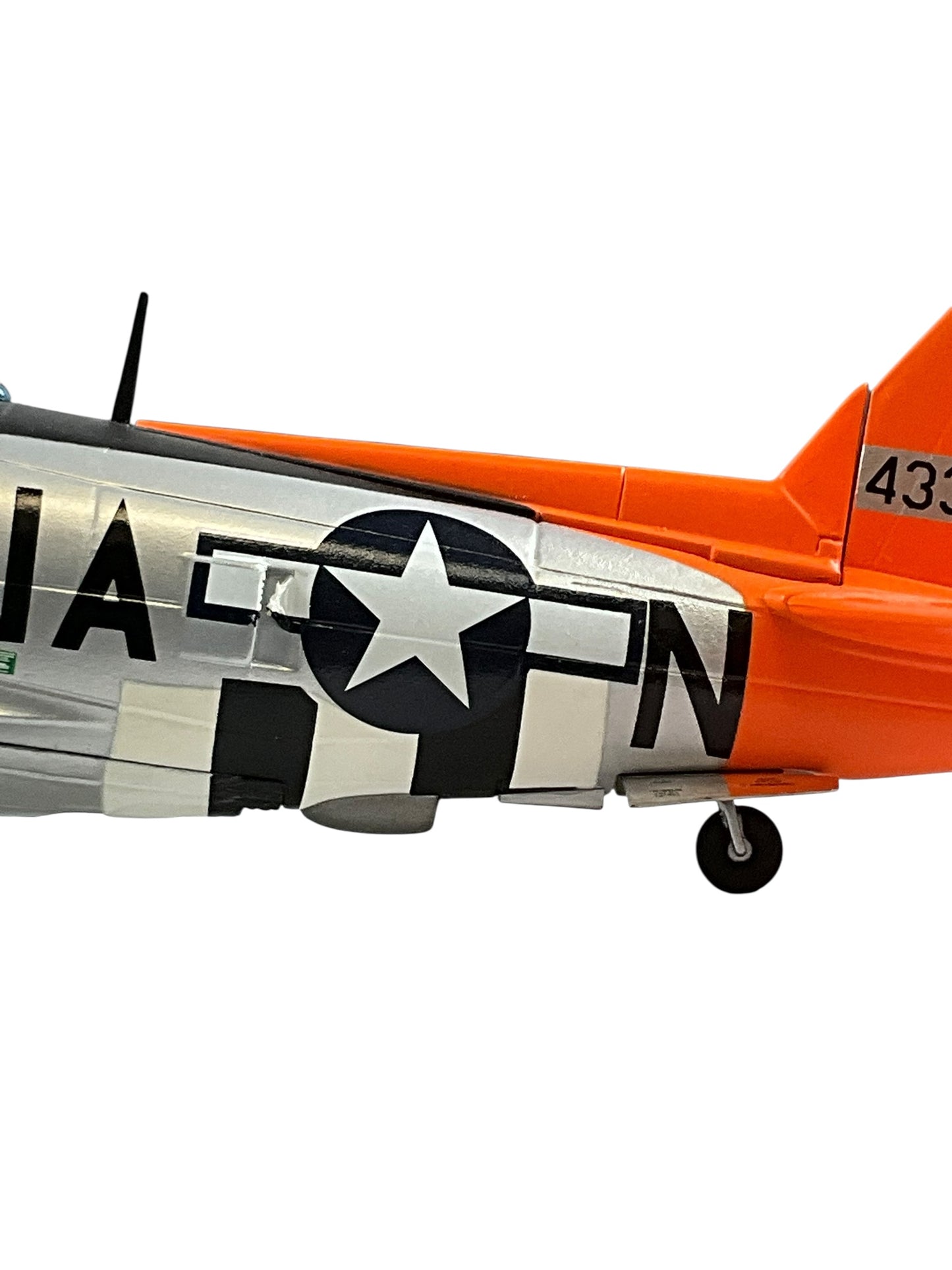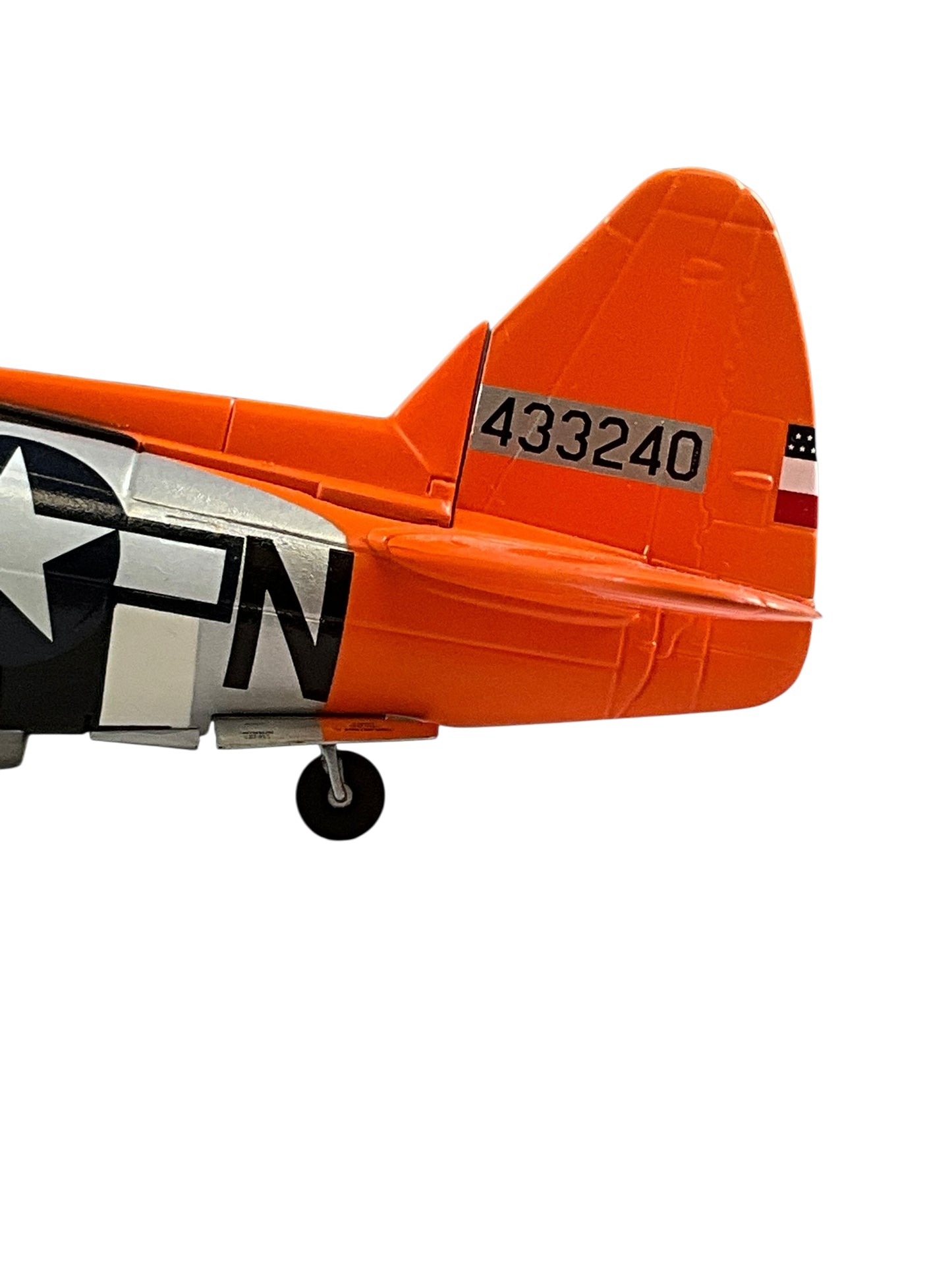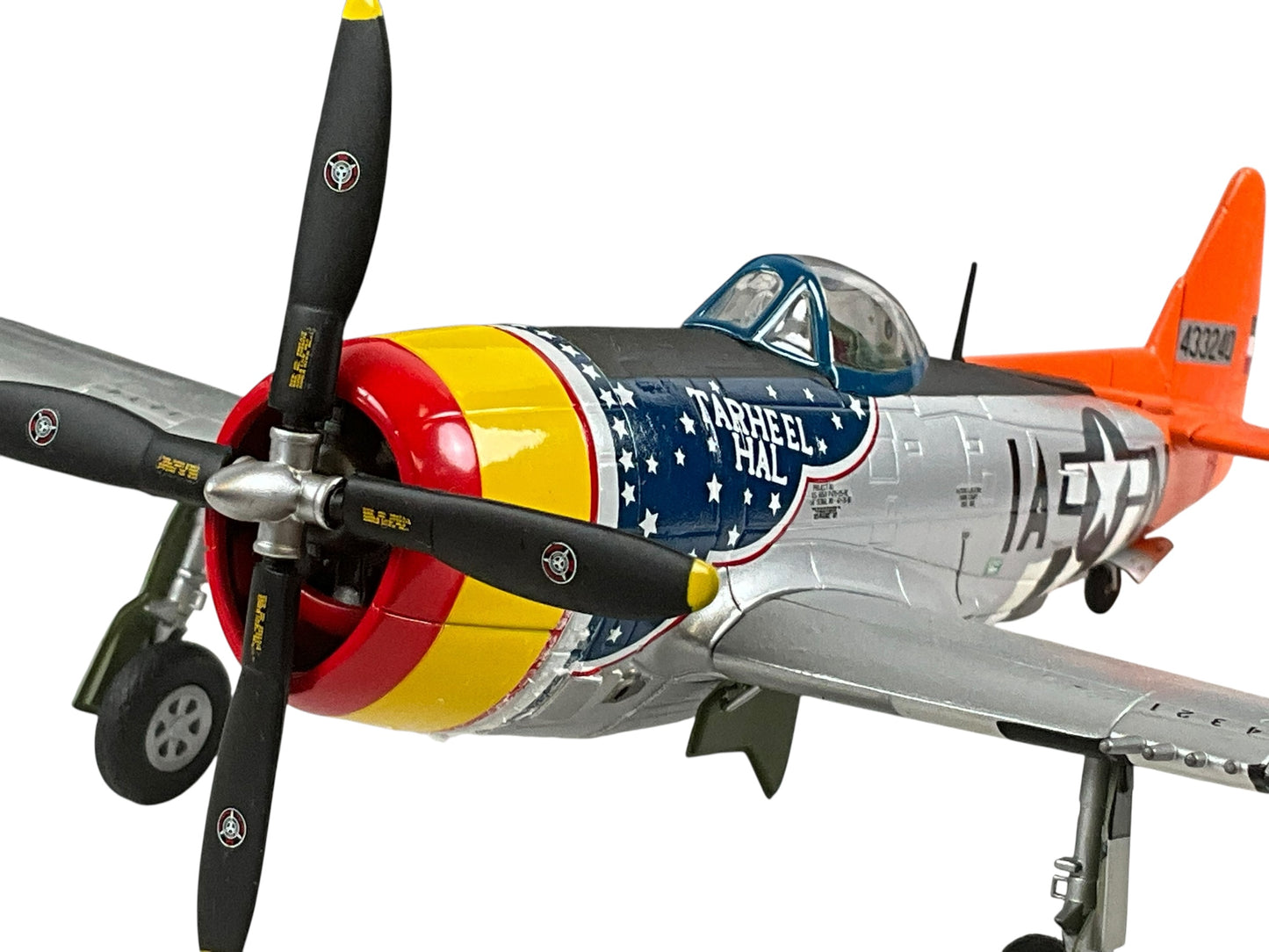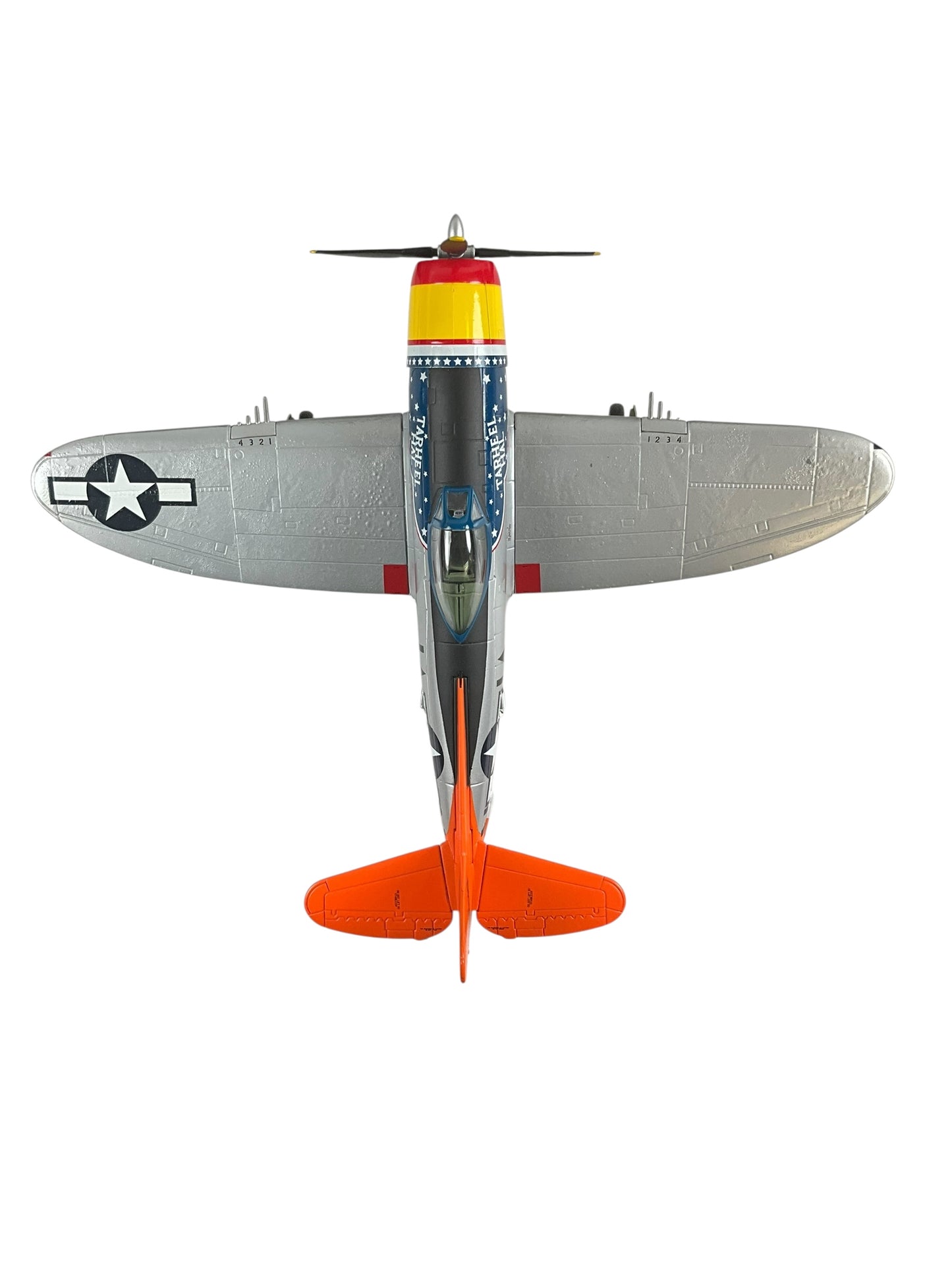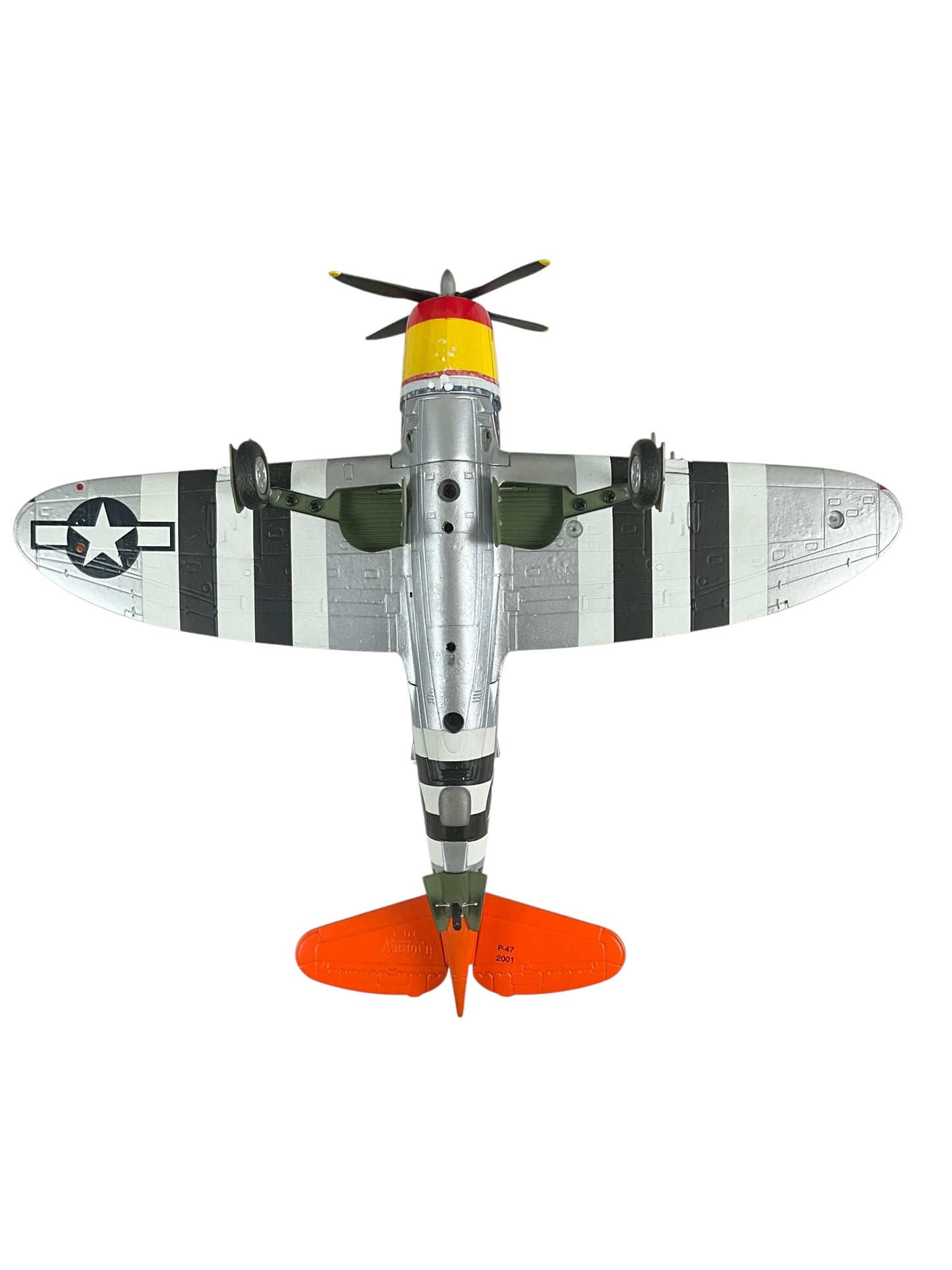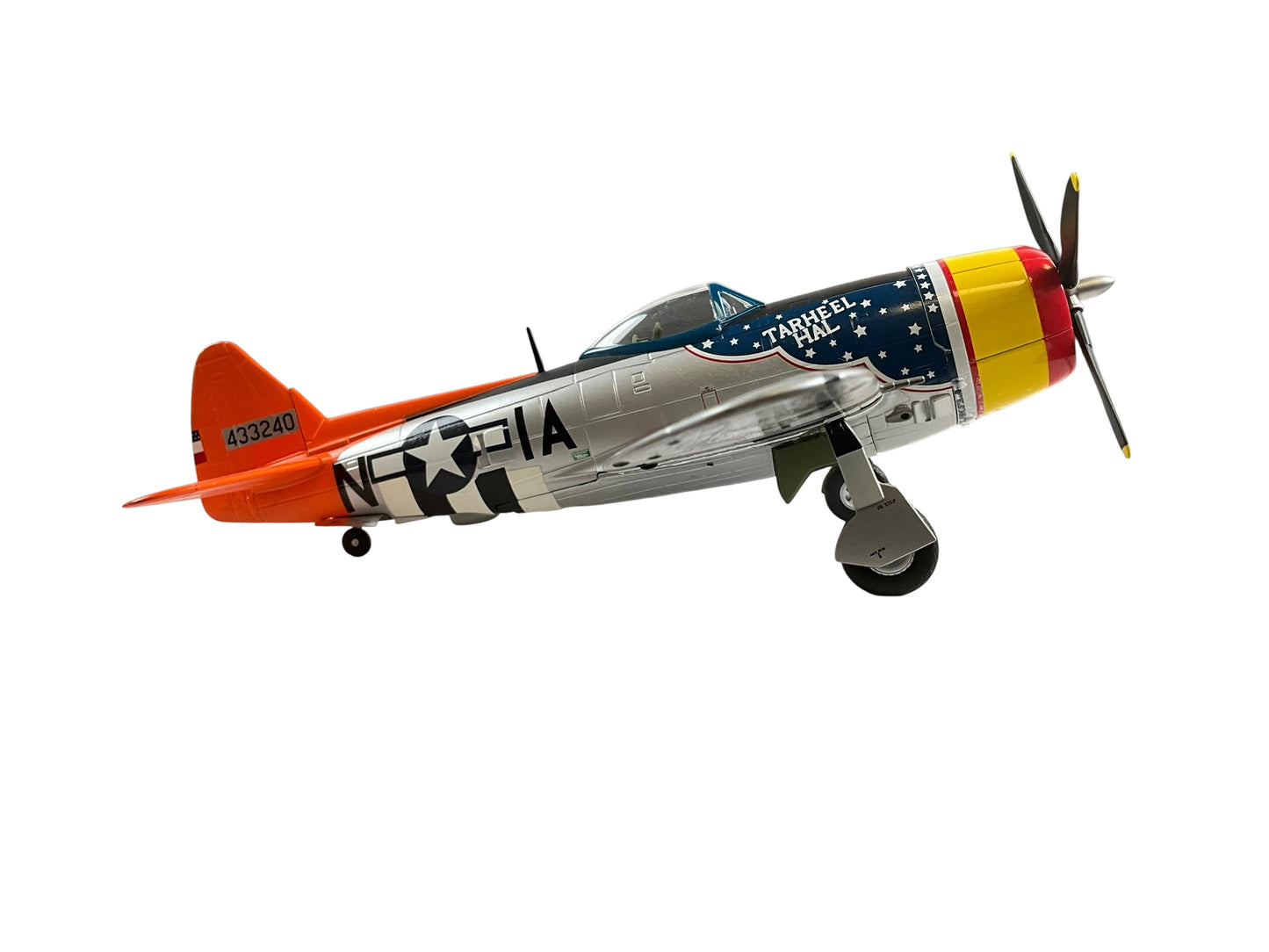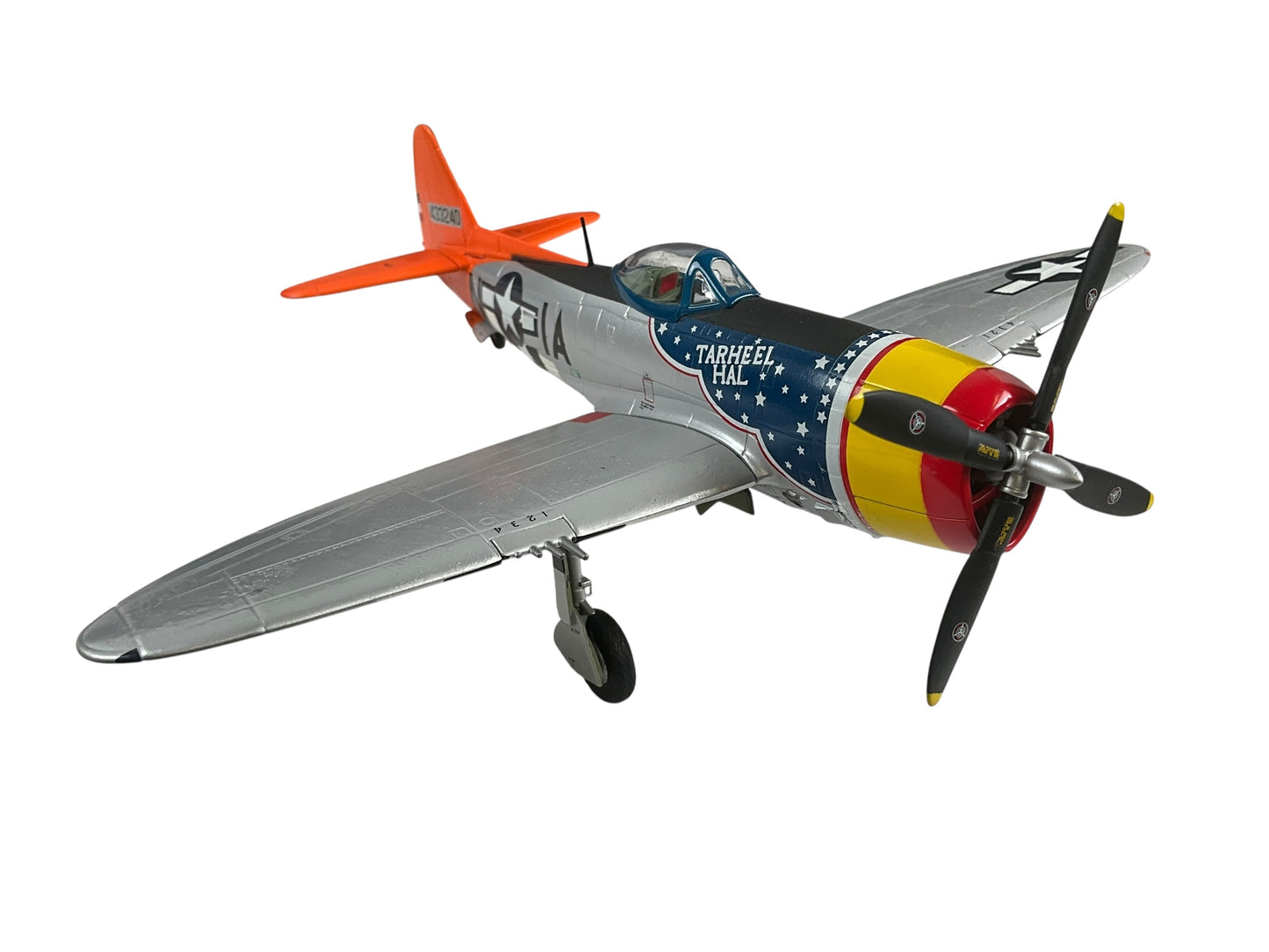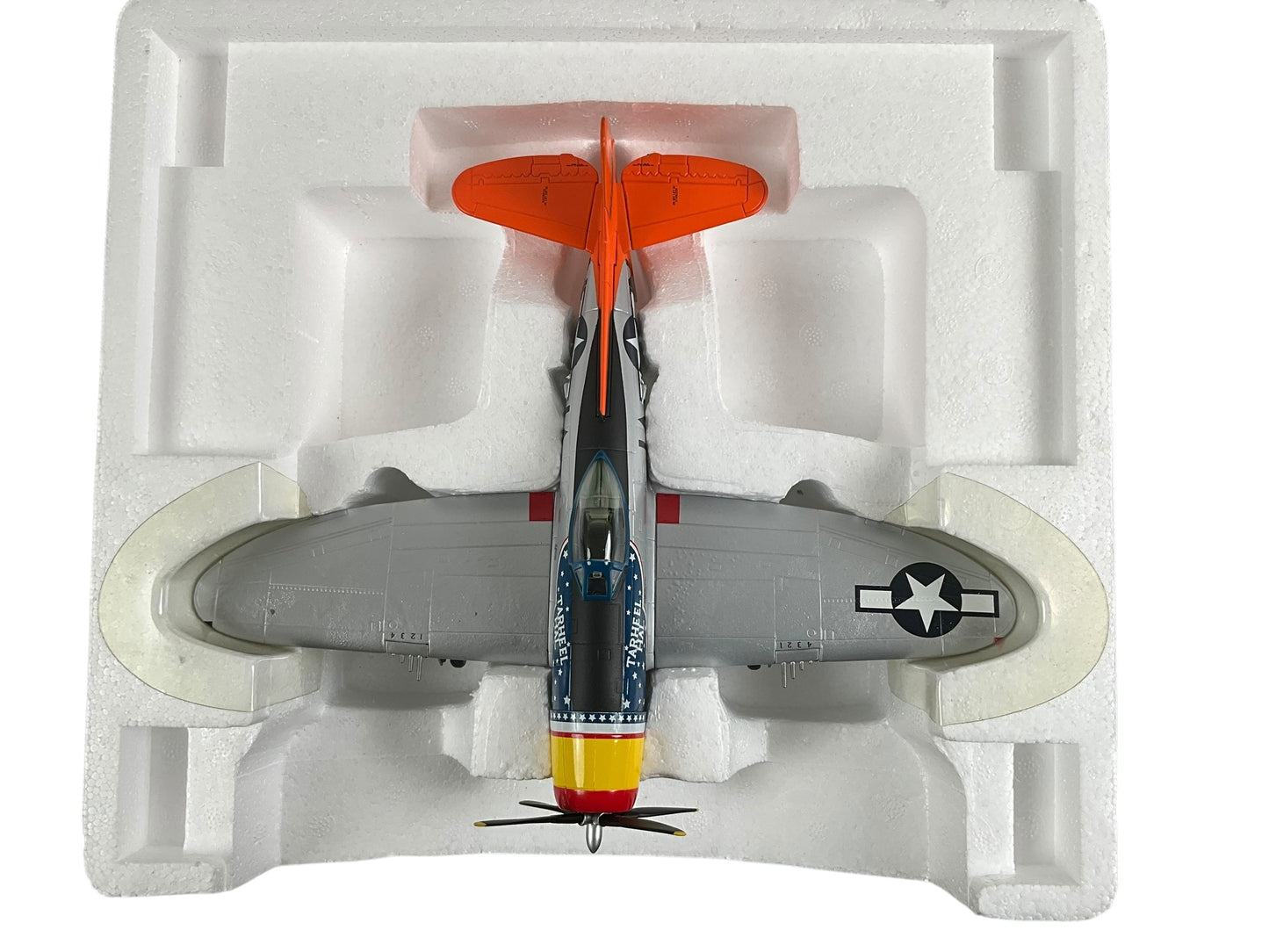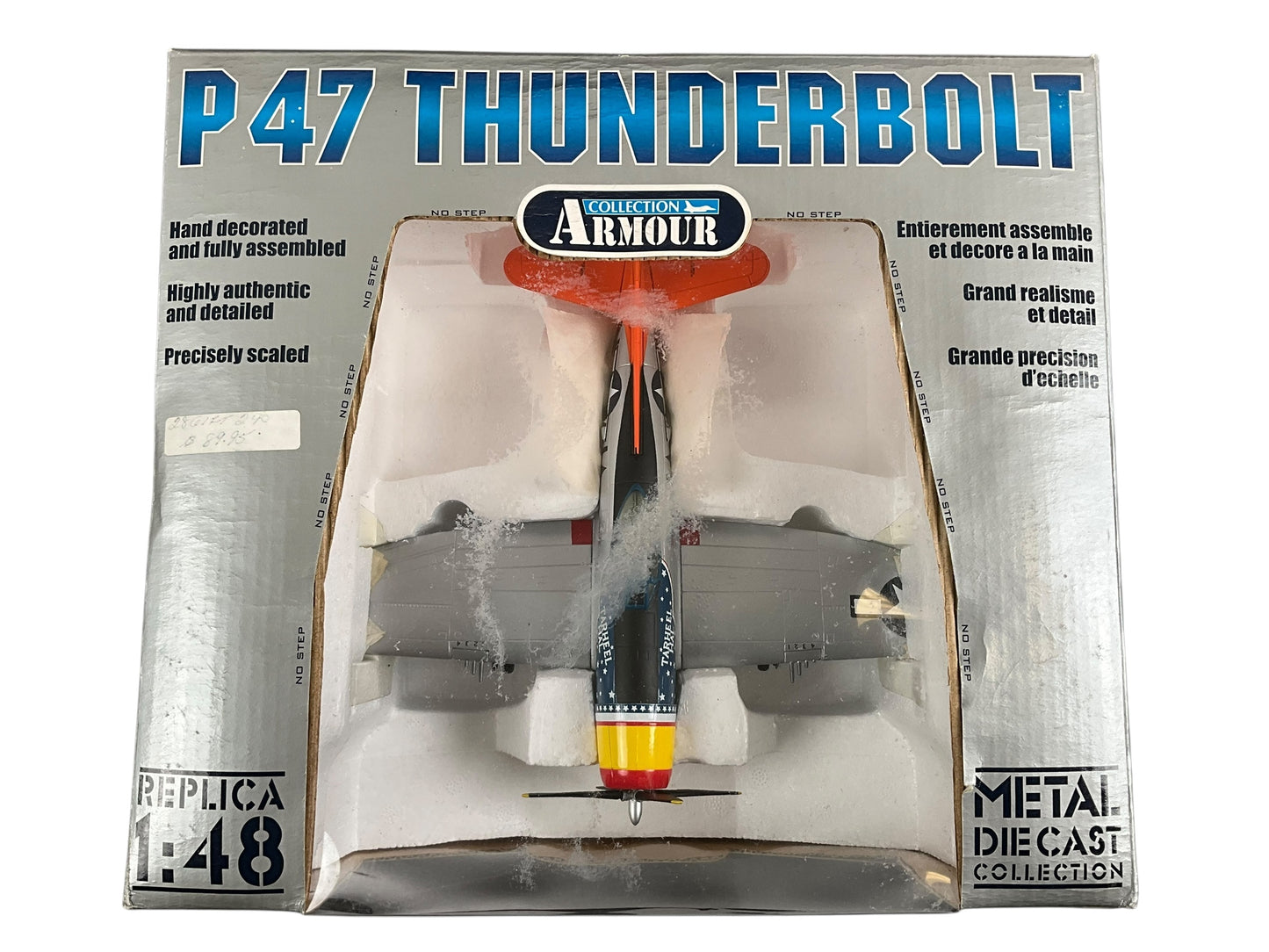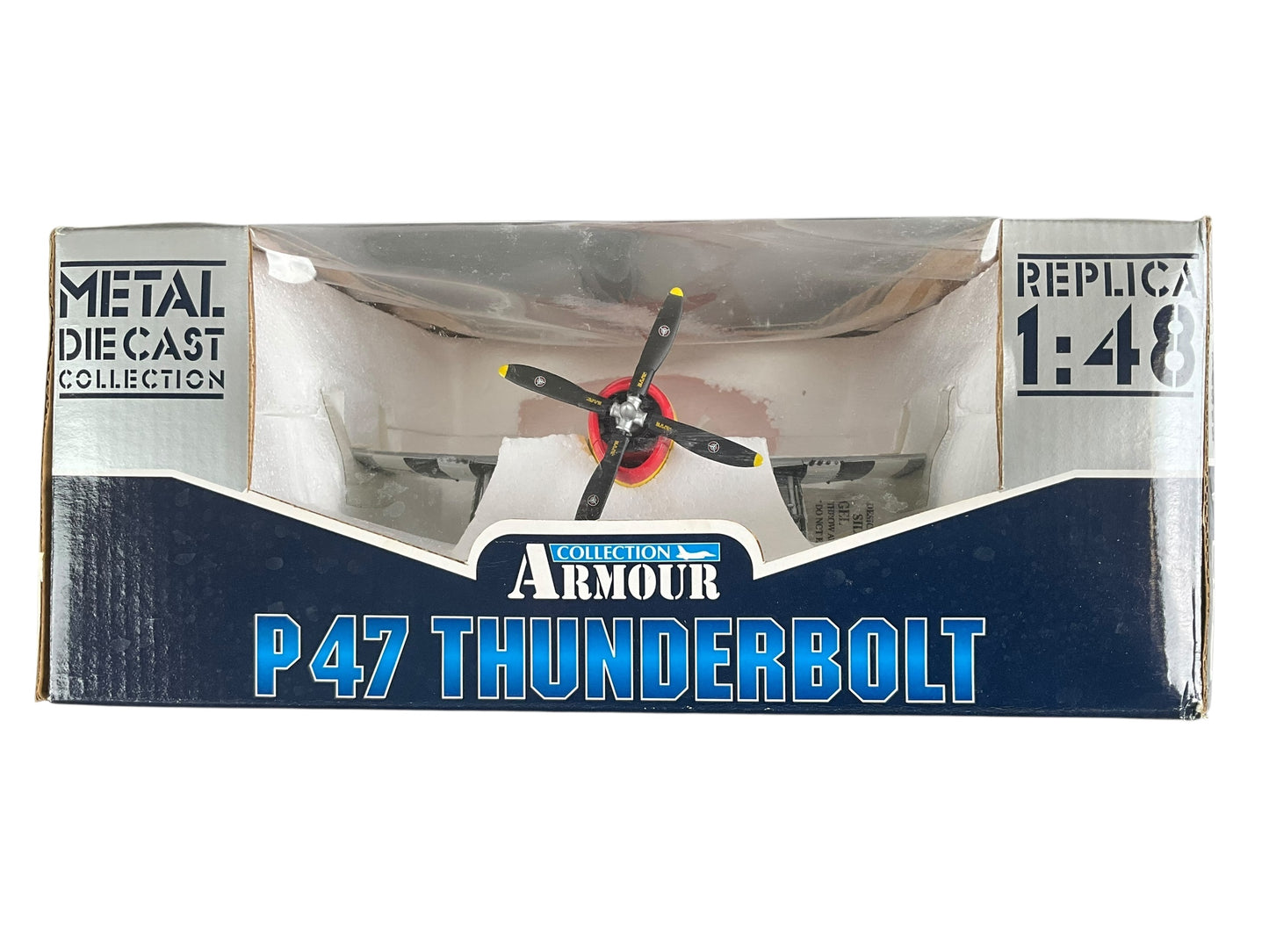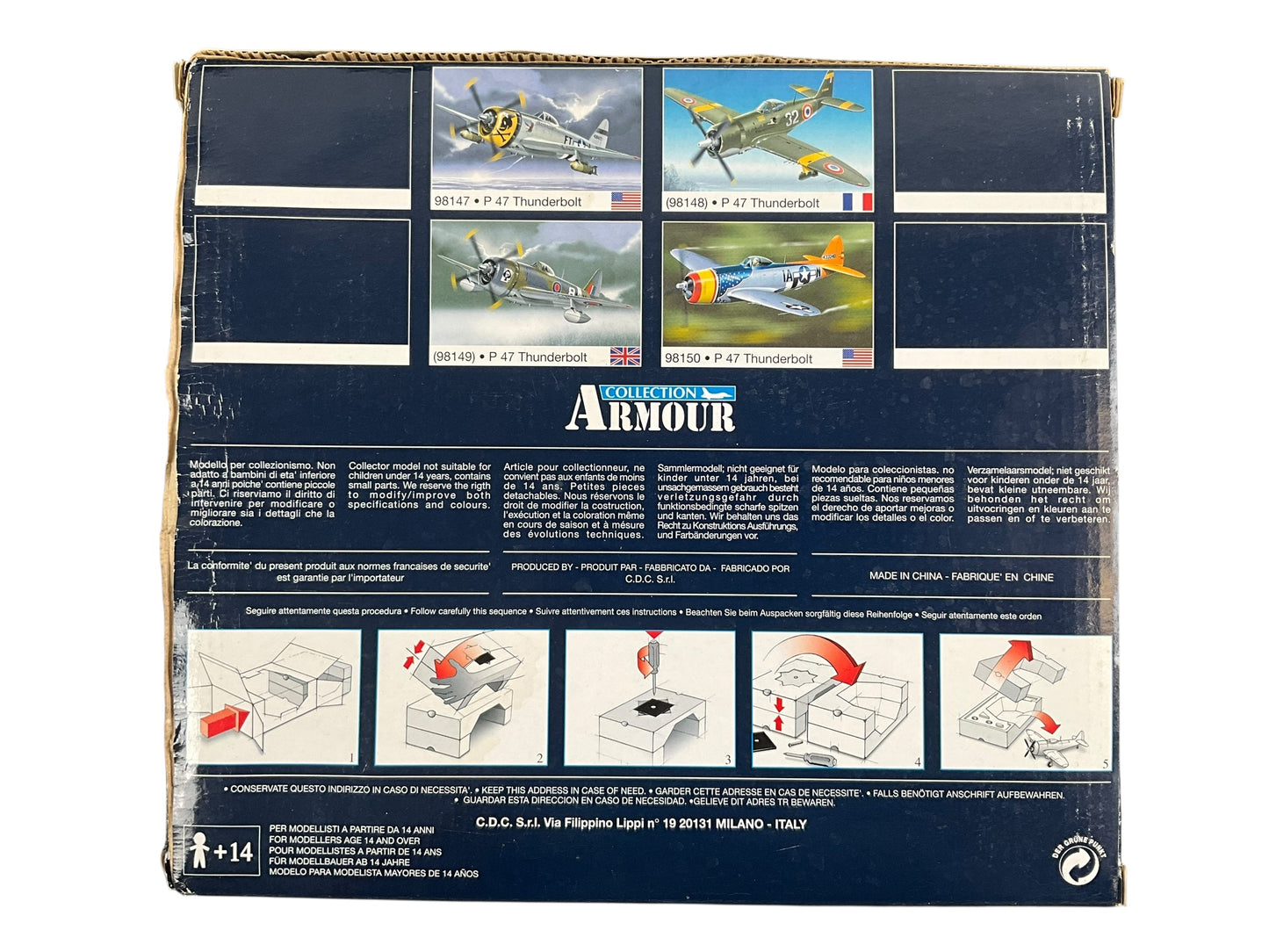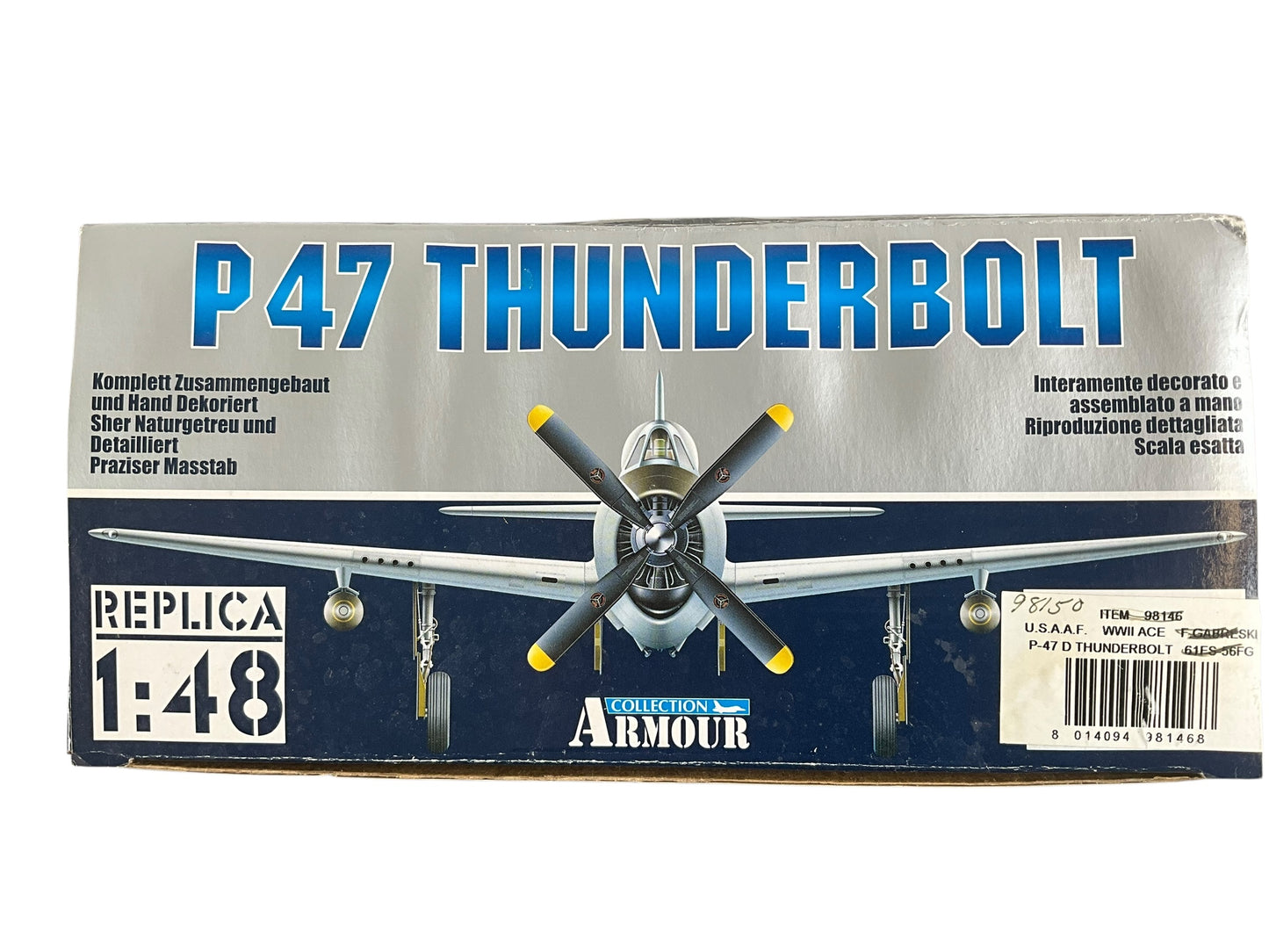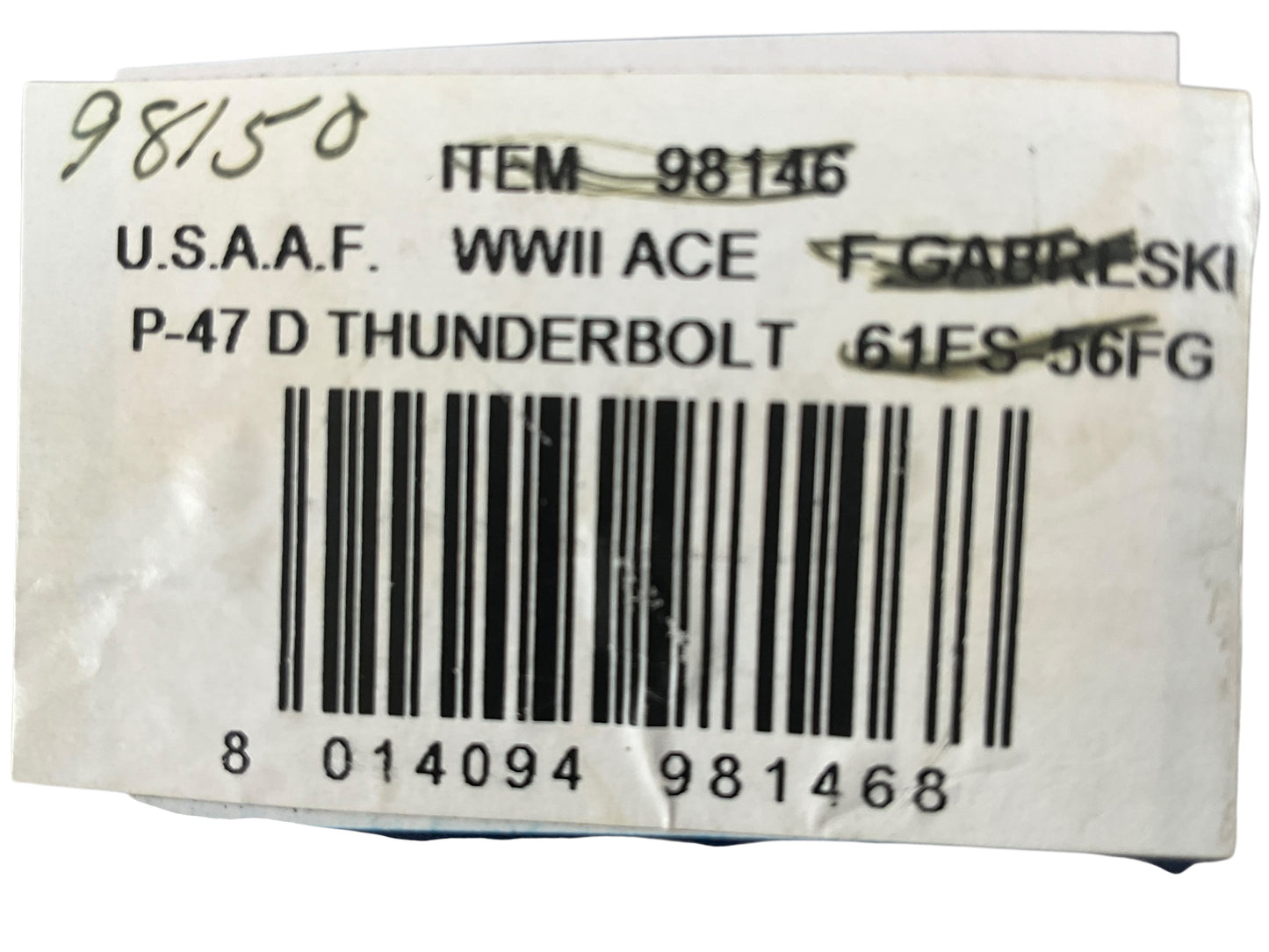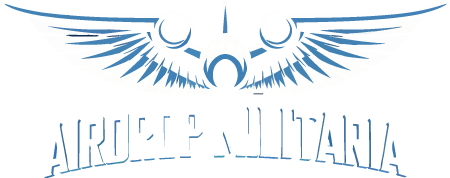airdrop militaria
1/48 Armour/Franklin Mint (98150) Republic P47D Thunderbolt (IA+N - 433240) "Tarheel Hal" WWII,. U.S.A.A..F. (Limited Edition.
1/48 Armour/Franklin Mint (98150) Republic P47D Thunderbolt (IA+N - 433240) "Tarheel Hal" WWII,. U.S.A.A..F. (Limited Edition.
Couldn't load pickup availability
1/48 Armour/Franklin Mint (98150) Republic P47D Thunderbolt (IA+N - 433240) "Tarheel Hal" WWII,. U.S.A.A..F. (Limited Edition)
** NOTE: Comes with a water damaged Armour Manufacturer's box originally from that of
a P47D fowqn by Colonel Francis Gabreski.
P-47 Thunderbolt Tarheel Hal
The airframe that would become “Tarheel Hal,” however, did not see combat. It was stationed in Missouri as a training aircraft for battlefield-bound pilots, which likely played a factor in its pristine preservation today.
History:
Delivered to USAAF as 44-90368.
- BOC: May 7, 1945.
- SOC: August 28, 1947.
Delivered to FA Venezuela as FAV 490368/6.
- BOC: October 28, 1947.
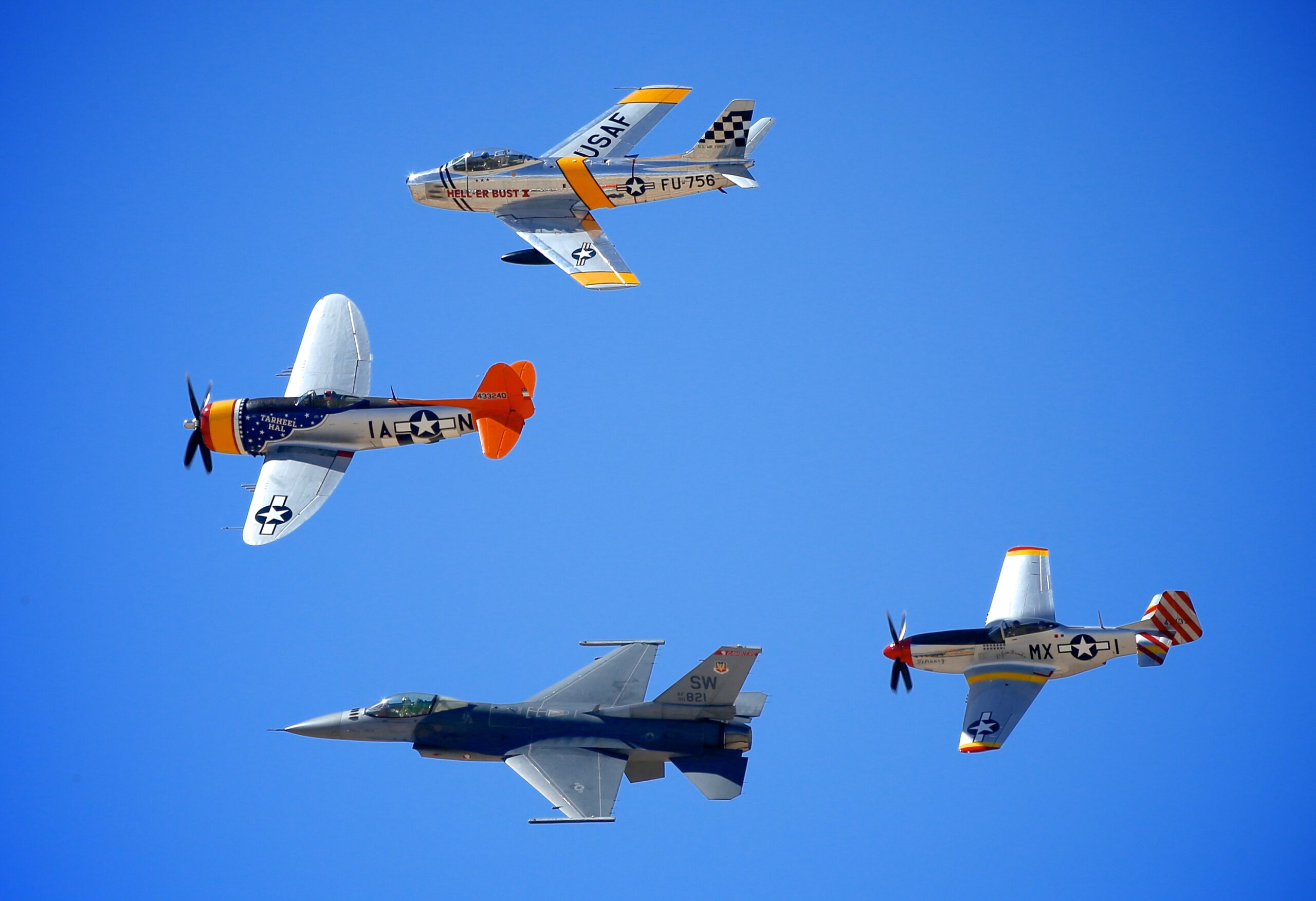
In August of 1947, the aircraft was sold to the Venezuelan Air Force under the Lend Lease Act – a system that would allow the United States to lend or lease war supplies to any nation deemed “vital to the defense of the United States” — where it served for nearly three decades.
It was then purchased from the Venezuelan Air Force by a private collector in France. The Thunderbolt was taken apart, crated, and then made the trans-Atlantic journey to France, where it was never reassembled. A decade later, Kentucky-based collector Charles Osbourne purchased the aircraft, and former Heritage Flight pilot Brad Hood restored and repainted the P-47 in the scheme “Big Ass Bird II.”
“It’s one of the most accurately and thoroughly restored P-47s,” said Hainline. “The wiring was remade with cloth insulation because that’s how they did it back then and the attention to detail was just over the top for this restoration period in the early 90s. Its gun, with dummy ammunition, had all the markings, and everything in the cockpit was accurate and in place. The only thing that wasn’t original to the cockpit was the modern radio that was installed to help navigate the warbird across the country.”
Osbourne and Hood flew “Big Ass Bird II” for a few years before deciding to repaint the Thunderbolt to a more family-friendly “Tarheel Hal.”
In 1998, under the new paint scheme the aircraft was sold to the Lone Star Flight Museum, then located in Galveston, Texas, where it remained part of the collection for 22 years.
“Warbirds are bought and sold all the time, so they change hands often, but it’s not often they stay in the same livery scheme,” said Hainline. “This one stuck as they liked the story behind ‘Tarheel Hal’ so much, serving as paint scheme of North Carolina-native Lieutenant Ida Davis of the 358th Fighter Group.”
“A lot of pilots in the war named their airplanes after their girlfriend or wife, according to our research, Lieutenant Davis had two girlfriends,” said Hainline. “He didn’t want to put either of his girlfriend’s name on an airplane in fear of they might be outed, so it was named ‘Tarheel Hal’ in honor of his brother who was at the University of North Carolina at the time.”
Hainline noted that many people are shocked that “Tarheel Hal’s” paint scheme, with its orange tail and blue nose with stars, was that “gaudy” for combat. But Hainline and his team have found pictures of the aircraft during World War II that confirm its accuracy.
Then in October 2020, The Evansville P-47 Foundation, after raising almost $3 million through campaigns, purchased “Tarheel Hal” as the centerpiece of the Evansville Wartime Museum.
The P-47 Thunderbolt has a special place in Evansville history. Over 6,000 P-47 Thunderbolts were manufactured in Republic Aviation’s plant, and the aircraft has become a symbol of pride for the town.
“It was kind of bittersweet because it went to a very a great organization, but at the same time, I didn’t want to see it go,” said Hainline. “They are deeply in love with the P-47, and that warms the heart when you have to say goodbye to an old friend.”
After the purchase, Hainline took “two hops” to fly the aircraft from Houston to Indiana, with a brief pit stop in Arkansas.
“They had a news crew down here in Houston, and then they had a veteran who flew the P-47 come down to watch the take off and then fly [to Evansville] to meet it.”
Six months later, Indiana State Legislature passed House Bill 1197, which named the newly repainted “Hoosier Spirit II” the official state aircraft of Indiana. Its current home at the Evansville Wartime Museum is just a mile from the original Republic Aviation manufacturing site in 1944.
While “The Jug” is known for being one of the heaviest aircraft during the WWII era, it was still a very comfortable, secure aircraft with controls that, as Hainline put it, “worked in harmony.”
“It’s very similar to the F-4,” said Hainline “You’re in a big, heavy well-built airplane and you just feel like nothing can hurt you. It was really delightful to fly.”
Hainline also noted that unlike the Mustang, the flight controls in the Thunderbolts never really changed with the airspeed. You might be going 135 miles an hour in a landing pattern, yet it feels about the same as going 350 miles an hour. But the best part about flying the P-47 Thunderbolt, especially in a Heritage Flight, is the dive.
“It’s actually very, very fast with lots of mass and momentum, so it really dives better than anything,” said Hainline. “Sometimes, I would be leading a formation with ‘Tarheel Hal’ and the Mustangs, and they’d have to ask me to pull the power back.”
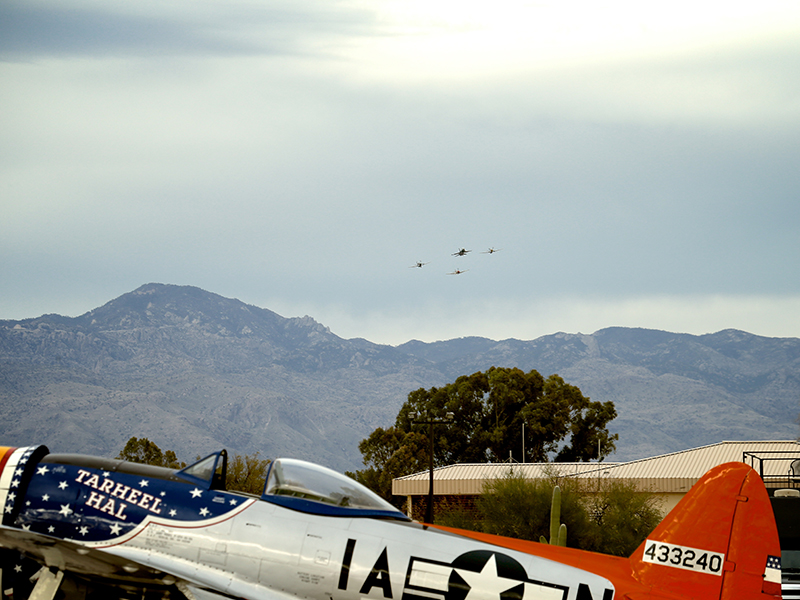
Share
